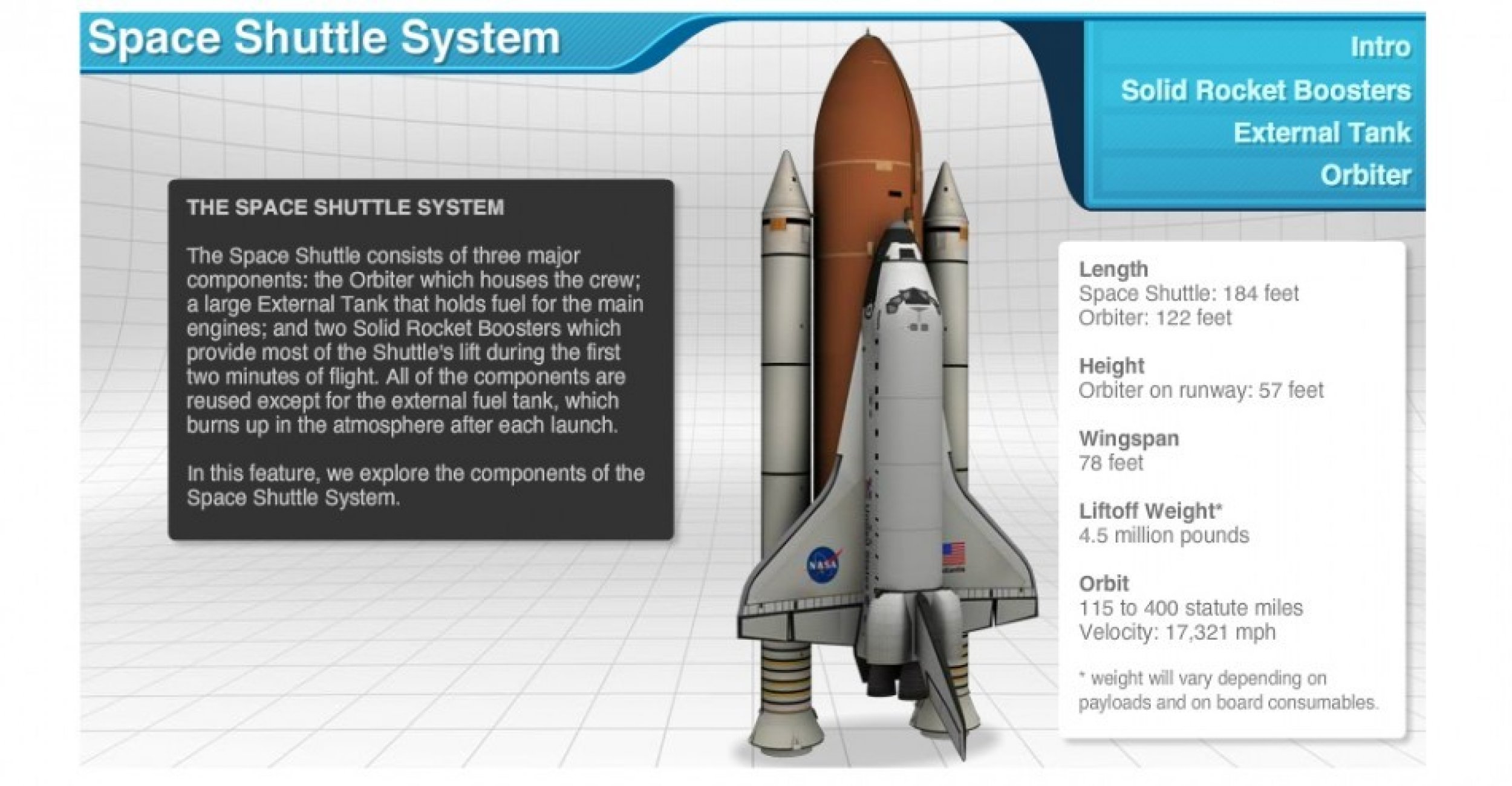Facts on Space Shuttles Ahead of NASA's Final Mission (PHOTOS)
NASA's five space orbiters -- Columbia, Challenger, Discovery, Atlantis and Endeavour -- have been rocketing since 1981 from the Florida coast into Earth orbit.
The space shuttles have flown more than 130 times, carrying over 350 people into space and traveling more than half a billion miles, more than enough to reach Jupiter.
The shuttle, which was designed to return to Earth and land like a giant glider, was the world's first reusable space vehicle. More than all of that, though, the shuttle program expanded the limits of human achievement and broadened our understanding of our world.
It all started with STS-1, launched on April 12, 1981, just twenty years to the day after Soviet cosmonaut Yuri Gagarin became the first human in space.
When astronauts John Young and Robert Crippen launched on April 12 morning in Columbia, it was the first time in history a new spacecraft was launched on its maiden voyage with a crew aboard.
For an entire generation, the space shuttle was NASA. We've watched a parade of firsts -- Sally Ride, Guy Bluford, Kathy Sullivan, John Glenn and others. We've seen astronauts float free, and launch and repair spacecraft like Hubble which have fundamentally changed our understanding of the universe, NASA said in a statement.
Space Shuttle Atlantis is scheduled to lift off on the final mission of the shuttle program, STS-135, a 12-day program to the International Space Station on July 8 at 11:26 am EDT.
But weather officials are expecting a tropical wave from the Caribbean that will hit Florida with a lot of tropical moisture. The shuttle launch, therefore, has 70 percent chance of canceling on July 8. It has a 60 percent chance of canceling on July 9 and a 40 percent chance of canceling on July 10. In all, there is a 17 percent chance that it won't launch at all by July 10.
Here is a glimpse of some key facts about the space shuttle system:







© Copyright IBTimes 2024. All rights reserved.





















